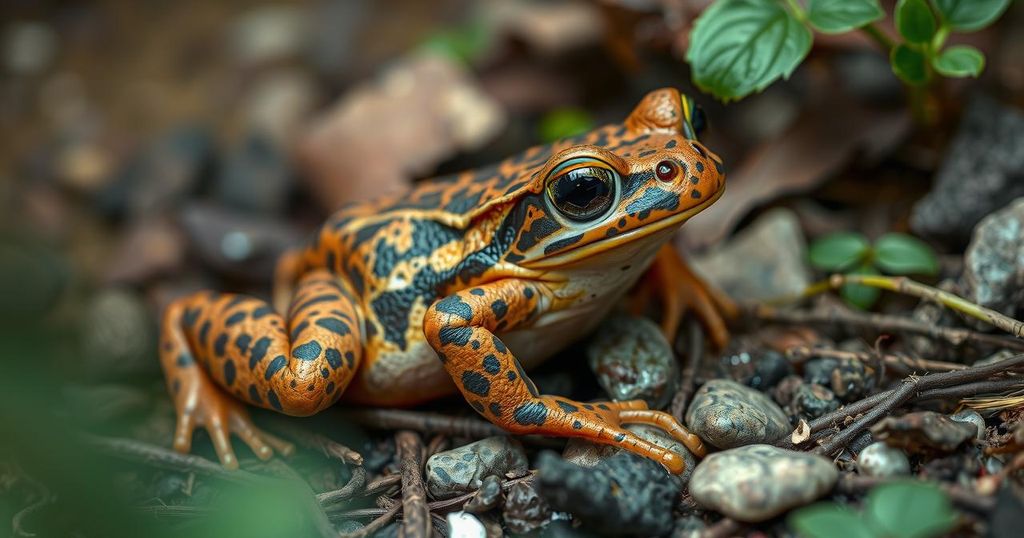The Helmeted Water Toad, a large amphibian and ‘living fossil’ from Chile, is at risk due to climate change and human actions. Its population has decreased significantly since 1990, now classified as ‘vulnerable’ by the IUCN. Conservationists raise alarms about habitat loss and pollution affecting this unique species.
The Helmeted Water Toad, a remarkable amphibian species that coexisted with dinosaurs, is facing dire threats due to climate change and anthropogenic activities in its native Chile. This large frog, which can measure over 30 centimeters and weigh up to one kilogram, is a “living fossil,” having experienced minimal genetic changes over millions of years. Despite its resilience in the past, recent assessments indicate a troubling decline in its population by at least 30 percent since 1990, primarily attributed to environmental degradation.
Conservationists such as Dr. Melissa Cancino, the founder of Proyecto Anfibia, express profound concern over the plight of this unique species. She remarks on the irony of a creature that has survived mass extinctions now facing threats from human activity: “It is sad that a species that managed to coexist with dinosaurs, that managed to resist a mass extinction, is now threatened by human beings.”
The Helmeted Water Toad inhabits a wide geographic range, yet its habitat is increasingly compromised by climate change, pollution, and poor waste management practices. Matias Faundez, another advocate from Proyecto Anfibia, recounts firsthand observations of environmental damage in local waterways: “This estuary runs through the whole city and has plenty of illegal run-offs. Even so, the frog manages to survive.”
Efforts to protect this species are crucial, as it has been classified as “vulnerable” on the International Union for Conservation of Nature’s Red List, highlighting the urgent need for conservation initiatives to mitigate the impact of climate change and restore its habitat.
The Helmeted Water Toad is an important amphibian species endemic to Chile and notable for its ancient lineage, having evolved little over millions of years. Its ability to survive in changing climates historically provides a fascinating context for its current vulnerabilities. However, with the intensifying effects of climate change, pollution, and habitat destruction, the need for conservation has become increasingly pressing. Organizations like Proyecto Anfibia aim to research and educate the public about the importance of amphibian preservation in ecosystems.
In conclusion, the Helmeted Water Toad exemplifies the precarious balance between biodiversity and environmental stability. Despite its historic resilience, threats posed by climate change and human activities necessitate immediate conservation efforts. The loss of such an ancient species would not only be a tragedy but also a loss of ecological heritage. Strengthening protective measures and restoring habitats are essential steps to ensure the survival of the Helmeted Water Toad.
Original Source: learningenglish.voanews.com






